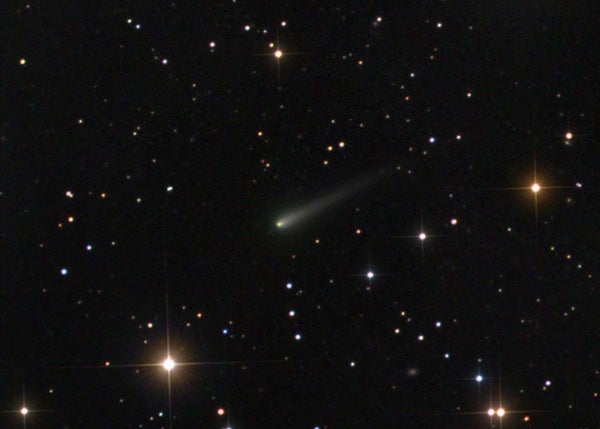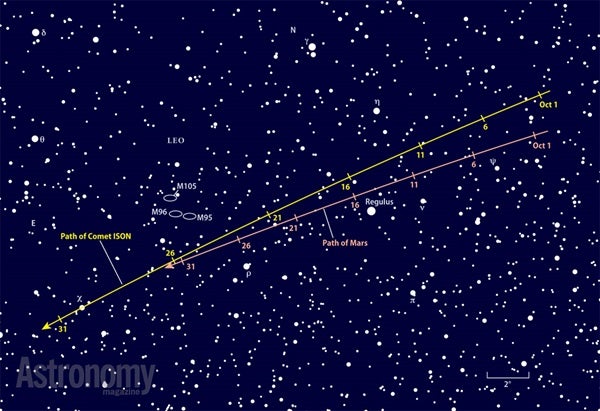Many observers will get their first looks at this comet through telescopes during the first half of October. It shines around 11th magnitude as the month begins and should brighten by another magnitude (a factor of 2.5), at least, by mid-October. This puts it within the range of a 6-inch telescope under a dark sky. Fortunately, the Moon cooperates by staying out of the morning sky throughout the month’s first two weeks.
Your best guide to finding the comet during this period is Mars. The Red Planet begins the month just 2° (four times the Full Moon’s diameter) south of ISON, a gap that drops to 1° by the 15th (use the finder chart below as a guide). Not only is Mars bright, shining at magnitude 1.6, but it also has a distinctive orange-red color that makes it easy to find on any clear morning. Once you center the planet in a low-power field of view, gently nudge your scope northward to locate ISON.
Keep a watch on the morning sky during October’s first two weeks, and you can’t help but notice that Mars and its cometary companion are approaching a conspicuous star. This is magnitude 1.4 Regulus, Leo’s brightest sun and a near match to Mars in terms of brightness. The star’s subtle bluish hue, however, contrasts nicely with the ruddy planet.
The seemingly lockstep motions of Mars and ISON carry them to within a stone’s throw of Regulus on October 15. The three objects form a spectacular straight line that morning, with Mars 1° north of Regulus and ISON 1° north of the planet. The trio rises shortly before 3 a.m. local daylight time and climbs one-third of the way to the zenith by the time morning twilight starts around 5:30 a.m. ISON picks up speed later in the month and will leave the star and planet behind as it moves closer to the Sun during the next several weeks.
Follow Comet ISON’s travels at www.Astronomy.com/ISON, and pick up the October issue of Astronomy and the special issue The Great Comet of 2013 for even more coverage of ISON’s voyage to the inner solar system.











